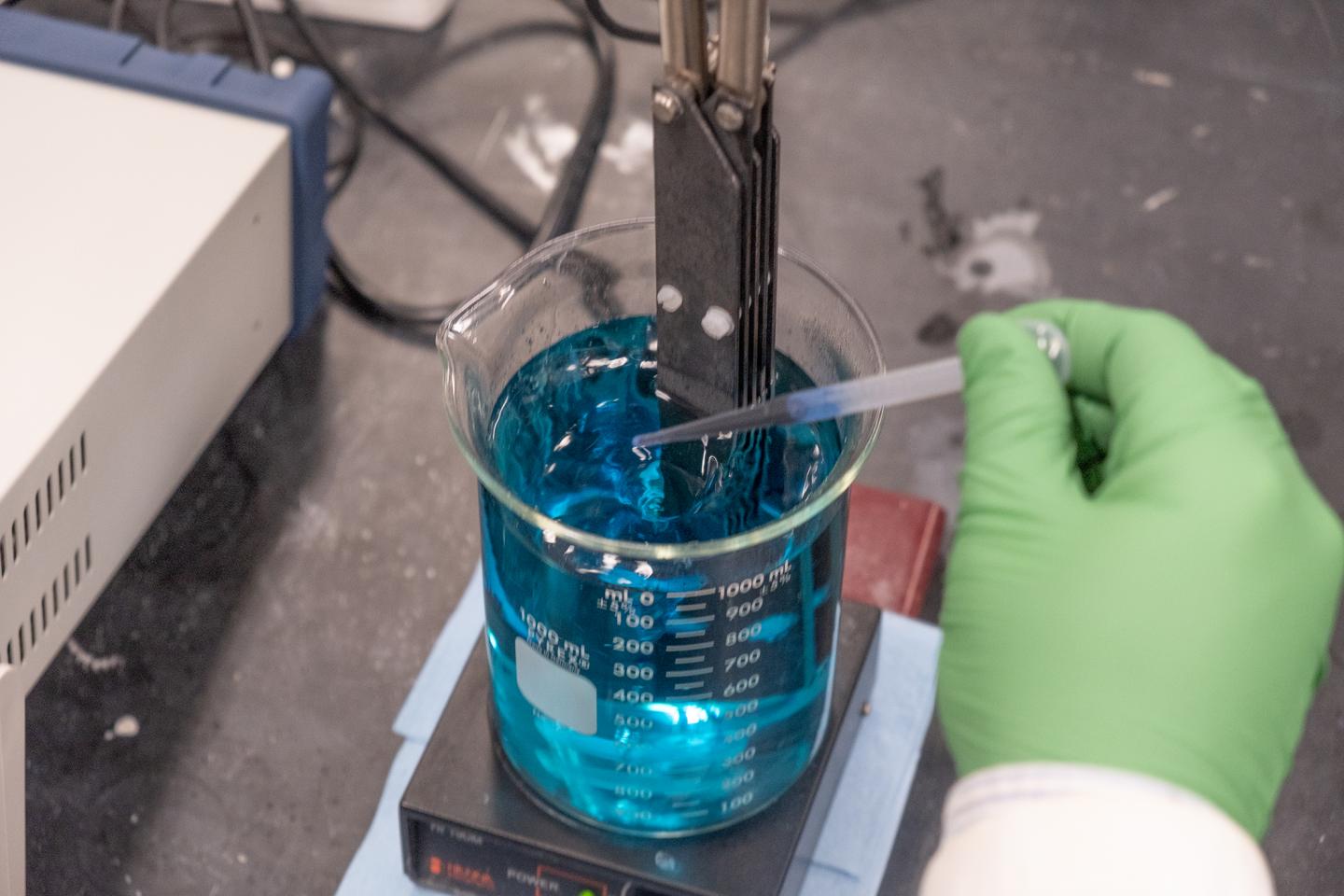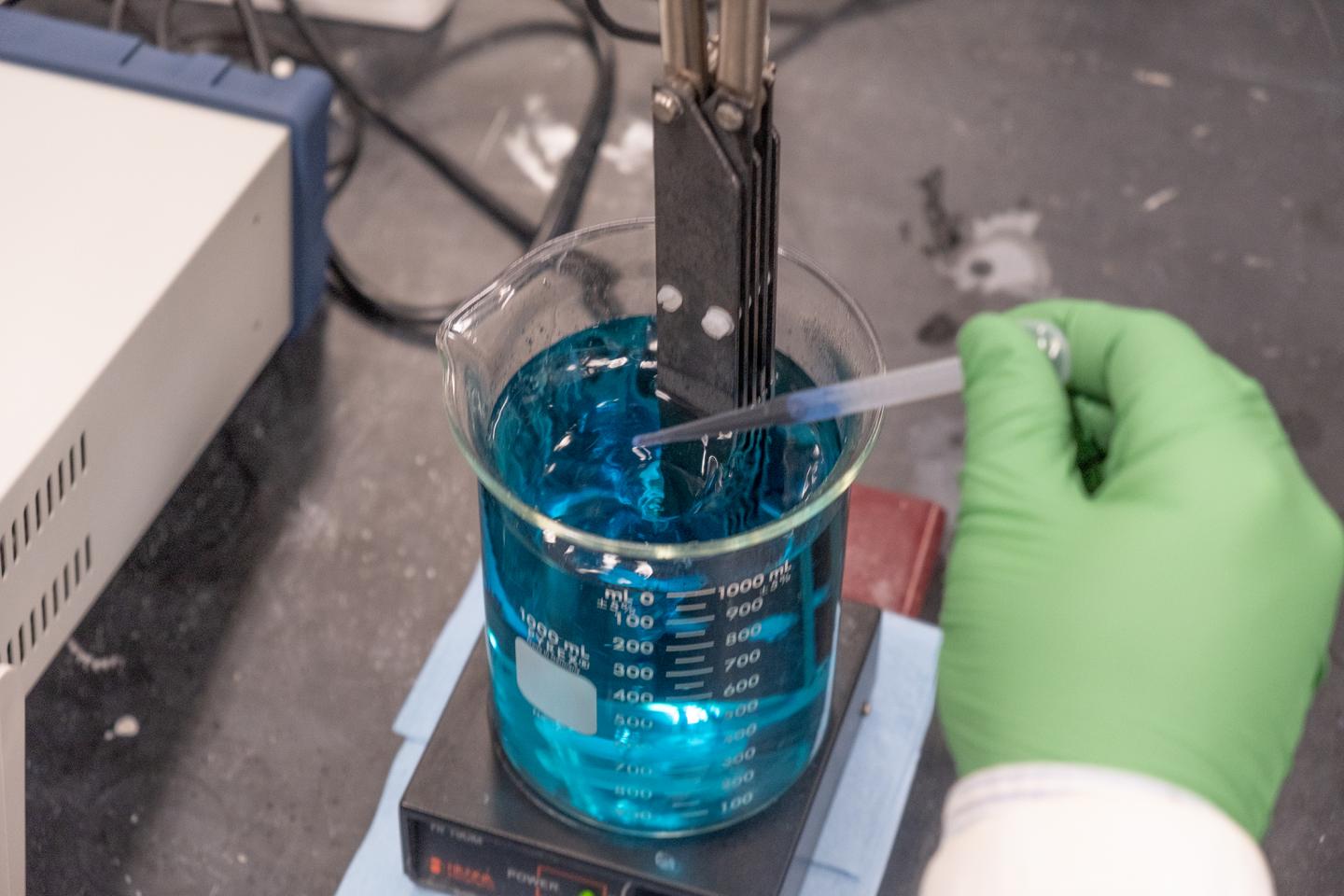
Credit: Photo by Derrick Turner
EAST LANSING, Mich. – More than 1.5 million Michigan residents and potentially more than hundreds of sites nationwide ¬- and counting – have PFAS-tainted water. Michigan State University-Fraunhofer USA, Inc. Center for Coatings and Diamond Technologies (MSU-Fraunhofer) is developing a scalable treatment option for PFAS-contaminated wastewater.
PFAS, or per- and polyfluoroalkyl substances, are colloquially known as "forever chemicals" because they are so difficult to break down. They are found in water supplies wherever flame retardants, waterproofing or vapor suppressants are used. PFAS can be absorbed through direct contact (drinking, bathing, swimming) or indirectly (eating meat or vegetables that have been exposed to PFAS).
A successful method to destroy PFAS remained elusive because of their extremely tough chemical structure. And because the recalcitrant compounds are difficult to breakdown, they accumulate over time and have been linked to adverse health effects. PFAS are so potent that even trace amounts are dangerous. Imagine three drops of an eye dropper in an Olympic-size pool. These three drops are about equal to the EPA health advisory level for PFOA and PFOS (two types of PFAS) in drinking water, which is 70 parts per trillion.
The MSU-Fraunhofer team has a viable solution to treat PFAS-contaminated wastewater that's ready for a pilot-scale investigation. The electrochemical oxidation system uses boron-doped diamond electrodes. The process breaks down the contaminants' formidable molecular bonds, cleaning the water while systematically destroying the hazardous compounds.
"EO, or electrochemical oxidation, is a simple, clean and effective method for destruction of PFAS and other co-contaminants as a complementary procedure to other wastewater treatment processes," said Cory Rusinek, electrochemist at MSU-Fraunhofer. "If we can remove it from wastewater, we can reduce its occurrence in surface waters."
Wastewater treatment is a multi-step process to remove contaminants or add beneficial chemicals to create safe, dischargeable water. MSU-Fraunhofer's EO system has advanced to the laboratory scale, successfully removing PFAS from gallons of tainted water. While many electrodes have been investigated in EO, boron-doped diamond electrodes have shown the most promise for contaminant degradation with a number of studies showing its ability to degrade PFAS.
The EO process systematically breaks down PFAS, transforming it from a hazardous material to carbon dioxide, water and fluoride. And because MSU-Fraunhofer is a leader in industrial diamond technology, the BDD electrodes are proving themselves as key workhorses in the process. Even after hundreds of rounds of treatments, the BDD electrodes are showing little, if any, wear.
Depending on its success and other advances, it's possible that this process could eventually become a complementary component of a municipal drinking water system.
The center has a long-established reputation as an international leader of industrial and next-generation diamond technologies. This combination places MSU-Fraunhofer in a strong position to solve problems such as this, said Michael Becker, MSU-Fraunhofer director of operations.
"Fraunhofer's mission is to bridge the innovation gap between basic research and the industry," he said. "MSU-Fraunhofer's combined expertise in diamond fabrication, electrochemistry and reactor design creates a diverse team of professors, scientists, engineers and students capable of addressing this emerging, yet significant, issue."
###
Michigan State University has been working to advance the common good in uncommon ways for 160 years. One of the top research universities in the world, MSU focuses its vast resources on creating solutions to some of the world's most pressing challenges, while providing life-changing opportunities to a diverse and inclusive academic community through more than 200 programs of study in 17 degree-granting colleges.
For MSU news on the Web, go to MSUToday. Follow MSU News on Twitter at twitter.com/MSUnews.
The MSU Fraunhofer USA's Center for Coatings and Diamond Technologies (CCD) is located in East Lansing, Mich. Since 1998, our team of experienced process engineers has developed coating solutions based on physical and chemical vapor deposition technologies (PVD, CVD). Our offered technologies include: high coatings for tooling and component applications, development of novel and proprietary coating solutions for customer applications, and development of applications and products for CVD diamond materials. CCD's goal is to provide our customers with competitive, next-generation solutions based on diamond materials.
Media Contact
Layne Cameron
[email protected]
517-353-8819
@MSUnews
http://msutoday.msu.edu/journalists/
Original Source
http://go.msu.edu/pGH





